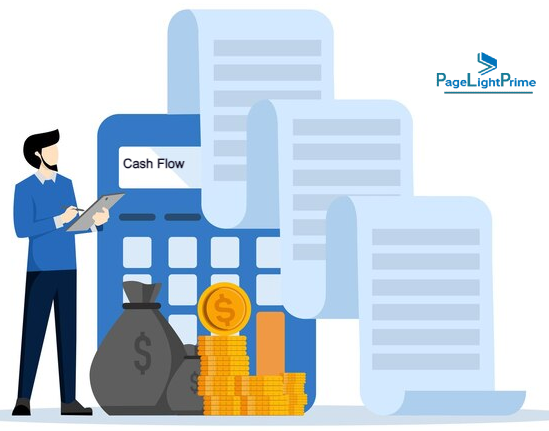Law Firm Accounting for Partners
The financial landscape of a law firm plays a pivotal role in shaping its success and sustainability. Partners within a law firm are not only legal practitioners but also stewards of the firm’s fiscal health. Understanding the nuances of law firm accounting is not merely a matter of financial acumen; it is a strategic imperative for making informed decisions that impact the firm’s profitability, operational efficiency, and long-term viability.
Written by Knowledge Team, posted on January 04, 2024

This handbook is specifically designed to provide legal partners with the vital knowledge required for navigating the complexities of accounting within their professional realm. While law firm accounting training is essential for all legal professionals in the firm, the training for partners should be customized to accentuate key areas such as profitability, growth, and compliance. Whether it involves supervising billing arrangements, deciphering financial statements, leveraging management reports, or implementing controls to tackle fraud risks, this guide serves as a specialized roadmap tailored for partners. Through the enhancement of their financial literacy, partners can adeptly steer their law firms towards prosperity with a focused approach.
The Essentials of Law Firm Accounting
Understanding the basics of law firm accounting is crucial for partners to make informed financial decisions. This chapter delves into the modified cash basis, differentiating it from accrual basis accounting, and explores its impact on transaction recognition. Partners will gain insights into under-realization or over-realization of hourly rates, various billing arrangements, and accounting techniques to manage reported income.
Recognize Accounting Basis Differences
- Meaning: Understand the fundamental distinctions between the modified cash basis and accrual basis accounting. The modified cash basis combines elements of cash and accrual accounting, impacting how transactions are recorded and recognized.
- Explanation: Modified cash basis accounting acknowledges income and expenses when there is an exchange of cash or a legal obligation to pay, combining aspects of both cash and accrual accounting. This method offers flexibility in recognizing revenue, aligning with the unique nature of law firm transactions.
- Example: Consider a law firm that bills clients for services rendered immediately but pays its expenses later. Under the modified cash basis, revenue is recognized upon billing, reflecting the cash transaction, while expenses are recorded when paid, resembling cash accounting principles.

Hourly Rate Realization
- Meaning: Specify circumstances leading to under or over-realization of hourly rates. This involves understanding factors such as billable hours, client agreements, and any deviations from standard billing rates.
- Explanation: Hourly rate realization refers to the alignment of billed hours with actual hours worked, impacting the accuracy of revenue recognition. Under-realization occurs when billed hours fall short of actual hours worked, affecting profitability, while over-realization happens when billed hours exceed the actual hours, potentially leading to client disputes.
- Example: If a law firm agrees with a client to bill for 20 hours of work but the actual time spent is 25 hours, there is under-realization. Conversely, if the agreed-upon billing is for 25 hours, but only 20 hours were worked, there is over-realization.

Billing Arrangements
- Meaning: Identify and comprehend the types of billing arrangements commonly engaged by law firms. This includes contingency fees, flat-rate billing, and other methods, each with its implications on revenue recognition and cash flow.
- Explanation: Law firms employ various billing arrangements, each influencing when revenue is recognized. Contingency fees link revenue to case outcomes, flat-rate billing offers predictability, and other methods may involve upfront retainers. Understanding these arrangements is crucial for managing cash flow and financial planning.
- Example: A law firm may enter into a contingency fee agreement where they earn a percentage of the client’s settlement. Revenue is recognized only when the case concludes successfully, aligning with the contingency fee arrangement.

Income Management Techniques
- Meaning: Recognize accounting techniques used to manage reported income strategically. This involves exploring methods to control income recognition, such as timing expenses, allocating costs, or deferring revenue.
- Explanation: Income management involves manipulating the timing of revenue recognition and expenses to optimize reported income. Law firms may strategically delay recognizing revenue or accelerate certain expenses to achieve specific financial objectives, such as tax planning or partnership distributions.
- Example: A law firm may choose to defer recognizing revenue from a large settlement until the next fiscal year to manage its tax liability effectively. This delay impacts on the reported income for the current year.

Law Firm Financial Statements
This chapter focuses on deciphering law firm financial statements, providing partners with a comprehensive understanding of the numbers that drive their practice. It explores the categorization of expenses, compensation, and operating expenses. Partners will also learn the derivation of distributable income and the impact on financial statements when transitioning from the modified cash basis to accrual accounting.
Expense Categorization
- Meaning: Understand the types of expenses categorized as compensation or operating expenses. This knowledge is essential for partners to interpret financial statements accurately and make informed decisions.
- Explanation: Expense categorization distinguishes between costs directly related to generating revenue (compensation) and those associated with day-to-day operations (operating expenses). Clear classification aids in analyzing financial statements and assessing the firm’s financial health.
- Example: Salaries and bonuses paid to lawyers are categorized as compensation expenses, directly tied to revenue generation. Office rent and utilities are considered operating expenses, supporting day-to-day business activities.

Distributable Income Derivation
- Meaning: Describe the process of deriving distributable income. This involves understanding how profits are calculated and distributed among partners, impacting the financial health of the firm.
- Explanation: Distributable income represents the portion of profits available for distribution among partners after covering essential expenses. Understanding the derivation process is vital for partners to assess their share of profits and make informed decisions regarding reinvestment or distribution.
- Example: If a law firm generates $1 million in profits and allocates $200,000 for operational expenses, the remaining $800,000 is distributable income. Partners’ shares are determined based on the partnership agreement, influencing their individual distributions.

Shift to Accrual Accounting
- Meaning: Recognize the changes in financial statements when shifting from the modified cash basis to accrual accounting. Understand the implications for revenue recognition, expense timing, and overall financial reporting accuracy.
- Explanation: Shifting from modified cash basis to accrual accounting involves recognizing revenue when earned and expenses when incurred. This transition impacts the timing of financial entries, potentially altering reported income and providing a more accurate representation of the firm’s financial position.
- Example: Under the modified cash basis, revenue is recognized upon cash receipt. With accrual accounting, revenue is recognized when services are performed, irrespective of when payment is received, offering a more comprehensive view of the firm’s financial performance.

Law Firm Management Reporting
Management reporting plays a pivotal role in decision-making. In this chapter, partners will discover the significance of various management reports and metrics. From understanding cash flow statements to identifying the uses of management reports, partners gain insights into leveraging financial information for strategic planning.
Statement of Cash Flows
- Meaning: Identify the contents commonly found in the statement of cash flows. This involves understanding the sources and uses of cash within the firm, providing insights into liquidity and financial health.
- Explanation: The statement of cash flows categorizes cash transactions into operating, investing, and financing activities. It provides a snapshot of the firm’s ability to generate and use cash, aiding partners in assessing liquidity and making strategic financial decisions.
- Example: If a law firm takes out a loan to invest in new technology, the cash flow from financing section reflects the loan proceeds, while the cash flow from investing section shows the technology investment.

Management Reports and Metrics
- Meaning: Recognize the uses of various management reports and metrics. Understand how these tools can aid partners in making strategic decisions based on financial insights, enhancing overall operational efficiency.
- Explanation: Management reports and metrics provide partners with key performance indicators (KPIs) and financial insights. These tools aid decision-making by offering a comprehensive view of the firm’s operational efficiency, client profitability, and financial health.
- Example: A law firm may utilize a management report that highlights billable hours, client acquisition costs, and revenue per lawyer. Analyzing these metrics helps partners identify areas for improvement and optimize resource allocation.

Law Firm Controls
Minimizing instances of fraud is crucial for maintaining the integrity of a law firm. This chapter outlines controls to mitigate fraud risks within a law firm. Partners will also learn specific controls related to the handling of cash, ensuring financial transparency and security.
Fraud Mitigation
- Meaning: Identify controls that can minimize instances of fraud within a law firm. This involves implementing policies and procedures to detect and prevent fraudulent activities, safeguarding the firm’s reputation and financial integrity.
- Explanation: Fraud mitigation controls include measures to prevent, detect, and respond to fraudulent activities. These controls safeguard the firm’s assets, maintain trust with clients, and protect the integrity of financial reporting.
- Example: Implementing a segregation of duties where different individuals handle billing, collection, and financial reporting to create a system of checks and balances, reducing the risk of fraudulent activities.

Cash Handling Controls
- Meaning: Specify controls applicable to the handling of cash within a law firm. This includes procedures to ensure accountability, accuracy, and security in cash transactions, reducing the risk of mismanagement or misappropriation.
- Explanation: Cash handling controls are designed to secure and monitor the firm’s cash transactions. These controls ensure accountability for funds, accurate recording of cash movements, and protection against the mismanagement or misappropriation of cash.
- Example: Implementing a dual-authorization system for cash disbursements, where two authorized individuals must approve and sign off on any cash-related transactions, adds an additional layer of security and reduces the risk of fraudulent cash handling.

Conclusion
In conclusion, as legal professionals embark on the journey of enhancing their financial literacy and refining their expertise in accounting, it is crucial to have a powerful tool that aligns with their unique needs. PageLightPrime, our cutting-edge legal accounting software, stands as the ultimate solution. With its specialized features and a built-in trust accounting system, PageLightPrime is specifically crafted to meet the intricate demands of legal practitioners, offering an intuitive platform for managing billing arrangements, deciphering financial statements, leveraging management reports, and implementing controls to address fraud risks.
As partners strive to emphasize profitability, growth, and compliance in their training, PageLightPrime becomes an invaluable asset, providing a seamless and targeted approach to guide law firms towards prosperity. The integration of trust accounting within the software ensures not only efficiency but also compliance with essential legal and financial regulations.
In essence, PageLightPrime is more than just software; it is a strategic companion for legal partners, facilitating their journey towards financial acumen and success in the dynamic landscape of legal practice. With PageLightPrime, partners can confidently navigate the complexities of law firm accounting, ensuring a robust and prosperous future for their firms.
